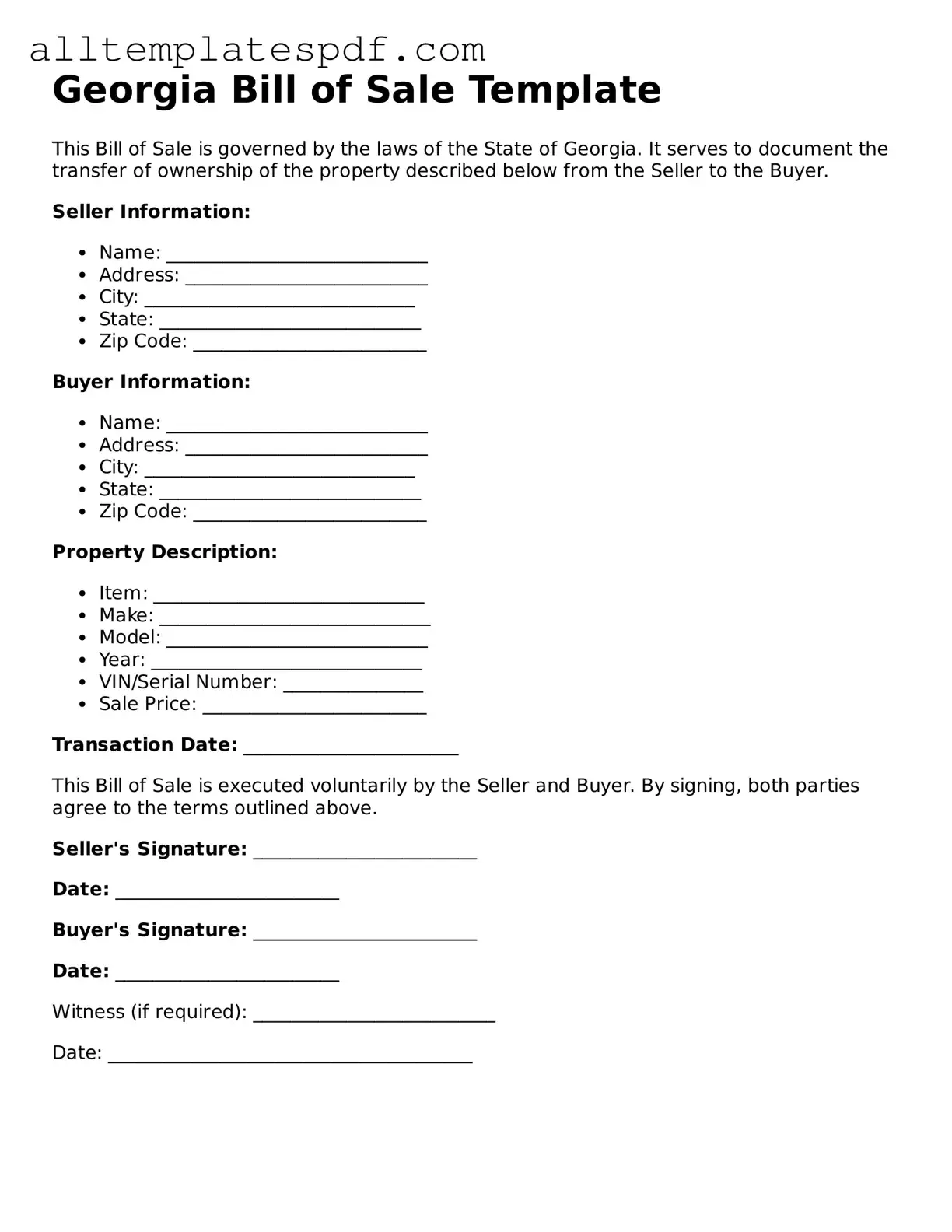Filling out the Georgia Bill of Sale form can seem straightforward, but many people make common mistakes that can lead to complications later. One frequent error is not providing complete information about the buyer and seller. Both parties need to include their full names, addresses, and contact information. Omitting any of these details can create confusion and may affect the validity of the document.
Another mistake is failing to accurately describe the item being sold. The form should include a detailed description of the item, including make, model, year, and any identifying numbers, such as a Vehicle Identification Number (VIN) for cars. Incomplete descriptions can lead to disputes about what was actually sold.
Some individuals forget to include the purchase price. It’s essential to state the amount clearly to avoid any misunderstandings later. Leaving this section blank or writing an ambiguous figure can create problems if either party needs to reference the sale in the future.
Not signing the document is a critical oversight. Both the buyer and seller must sign the Bill of Sale for it to be legally binding. A form without signatures may not hold up in court or during a transaction, so this step is crucial.
Many people overlook the importance of having a witness or notarization. While not always required, having a witness sign the Bill of Sale can add an extra layer of protection. Notarizing the document can also provide additional legal assurance, especially for high-value items.
Another common error is not keeping a copy of the completed Bill of Sale. After signing, both parties should retain a copy for their records. This document serves as proof of the transaction and can be important for future reference, such as tax purposes or if any disputes arise.
Lastly, individuals sometimes fail to understand the specific requirements for their particular type of sale. Different items, such as vehicles or firearms, may have additional regulations or forms that need to be completed. Researching these requirements beforehand can save time and prevent issues down the line.
